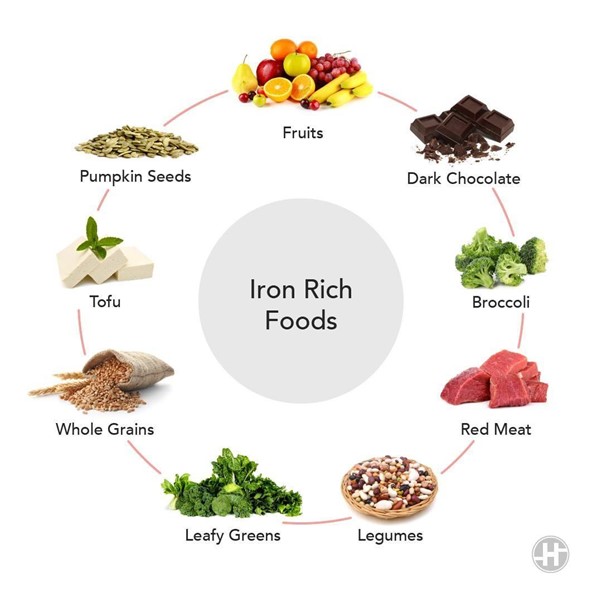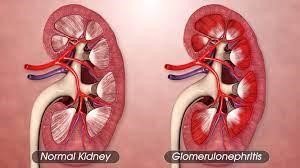A young adult client with a history of iron deficiency anaemia has a haemoglobin of 10.5 g/dL (6.52 mmol/L). Which food choice should the nurse recommend to this client?
Reference Range
Haemoglobin (Hgb) [Reference Range: Male: 14 to 18 g/dL or 8.7 to 11.2 mmol/L]
Broccoli.
Carrots.
Cheddar cheese.
Whole milk.
The Correct Answer is A
Choice A
Broccoli is appropriate recommendation. Given the client's history of iron deficiency anaemia and the current haemoglobin level below the reference range, it's important to recommend foods that are good sources of iron. Among the options provided, broccoli is the most suitable choice. Iron from plant-based sources (non-heme iron) might be less easily absorbed than iron from animal sources (heme iron), but combining them with foods high in vitamin C can enhance iron absorption. Broccoli is a vegetable that contains both iron and vitamin C, making it a favourable choice to support the client's iron intake and help address the anaemia.
Choice B
Carrots are inappropriate. While carrots are a nutritious vegetable, they are not particularly high in iron.
Choice C
Cheddar cheese is inappropriate. Dairy products like cheddar cheese are not significant sources of iron.
Choice D
Whole milk is inappropriate. Whole milk is not a significant source of iron either. Additionally, calcium in milk might hinder iron absorption if consumed together.

Nursing Test Bank
Naxlex Comprehensive Predictor Exams
Related Questions
Correct Answer is D
Explanation
Choice A
Nuts is incorrect. Nuts are a good source of healthy fats, including monounsaturated and polyunsaturated fats, which can actually have a positive impact on heart health. They have been associated with improving HDL cholesterol levels and can be a part of a heart-healthy diet. While nuts are calorie-dense, small portions can be included as part of the client's diet to replace less healthy snacks. Therefore, nuts might not need to be completely avoided.
Choice B
Shellfish Is incorrect. Shellfish, including shrimp, crab, and lobster, are relatively low in saturated fat and cholesterol. While they do contain cholesterol, dietary cholesterol has less impact on blood cholesterol levels compared to saturated and trans fats. The client's main concern is elevated LDL cholesterol, which is influenced more by saturated fat intake. Therefore, avoiding shellfish might not be as crucial as focusing on saturated fat sources.
Choice C
Eggs is incorrect. Eggs are a source of dietary cholesterol, but they also provide essential nutrients. Recent research suggests that dietary cholesterol from foods like eggs has less impact on blood cholesterol levels for most people than was previously thought. For the client, the more significant concern is the elevated LDL cholesterol level. If the client enjoys eggs, they might not need to completely avoid them, but they should consume them in moderation and consider other dietary changes to reduce saturated fat intake.
Choice D
Cheese is correct. Cheese is often high in saturated fats, which can contribute to elevated LDL cholesterol levels. Therefore, it would be important for the client to limit their intake of high-fat cheeses.
Correct Answer is C
Explanation
Choice A
Following low carbohydrate diet with low glycaemic index foods is incorrect. This recommendation is not specifically related to the management of glomerulonephritis. While managing carbohydrate intake might be relevant for individuals with diabetes, it's not the primary focus for someone with kidney inflammation.
Choice B
Eating a high protein diet three times a day is incorrect: While protein is important for overall health and recovery, a high protein diet might not be the best recommendation for someone with compromised kidney function. Excessive protein intake could potentially put additional strain on the kidneys.
Choice C
Avoiding foods high in potassium is correct. Examples of foods high in potassium that the client should be cautious about include bananas, oranges, potatoes, tomatoes, spinach, and other fruits and vegetables. Glomerulonephritis is a condition involving inflammation of the glomeruli in the kidneys, which can affect kidney function and the regulation of electrolytes, including potassium. In glomerulonephritis, the kidneys might have difficulty filtering and excreting excess potassium, leading to a potential build-up of potassium in the blood (hyperkalaemia).
Choice D
Restricting sodium rich foods and excessive oral fluids is incorrect. This recommendation aligns more closely with managing fluid retention and blood pressure, which can be relevant for individuals with kidney issues. However, the primary concern in glomerulonephritis is often potassium balance, making the recommendation to avoid high potassium foods more pertinent.

Whether you are a student looking to ace your exams or a practicing nurse seeking to enhance your expertise , our nursing education contents will empower you with the confidence and competence to make a difference in the lives of patients and become a respected leader in the healthcare field.
Visit Naxlex, invest in your future and unlock endless possibilities with our unparalleled nursing education contents today
Report Wrong Answer on the Current Question
Do you disagree with the answer? If yes, what is your expected answer? Explain.
Kindly be descriptive with the issue you are facing.
